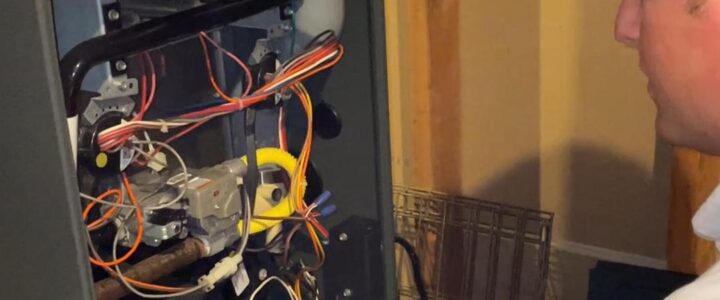A Crack in your furnace heat exchanger can be a serious issue. The heat exchanger is responsible for transferring heat from the combustion gases to the air that warms your home. If there’s a crack, it can lead to several problems:
- Carbon Monoxide Leaks: A crack can allow dangerous gases, like carbon monoxide, to escape into your home, posing serious health risks.
- Reduced Efficiency: A damaged heat exchanger can cause your furnace to operate less efficiently, leading to higher energy bills and inadequate heating.
- Increased Wear: A crack may cause the furnace to work harder to maintain temperature, leading to more wear and tear and potentially a shorter lifespan for the unit.
If you suspect a crack in your heat exchanger, it’s crucial to have a qualified technician inspect and address the issue immediately for safety and efficiency.
Carbon monoxide (CO) leaks from a cracked furnace heat exchanger can pose significant risks to health and safety. Here’s a deeper look into this issue:
What is Carbon Monoxide?
Carbon monoxide is a colorless, odorless gas produced during the combustion of fossil fuels. It can be emitted by furnaces, stoves, and other appliances that burn gas, oil, or wood.
How a Crack Leads to CO Leaks
When the heat exchanger cracks, it can create a pathway for combustion gases, including carbon monoxide, to escape from the combustion chamber into the air circulating through your home. This bypasses the intended venting system designed to safely expel these gases outside.
Health Risks of Carbon Monoxide Exposure
Exposure to carbon monoxide can be very dangerous. Even at low levels, it can cause symptoms like:
- Headaches
- Dizziness
- Shortness of breath
- Nausea
At higher concentrations, it can lead to severe health issues, including:
- Loss of consciousness
- Permanent brain damage
- Death
Symptoms of CO Poisoning
It’s essential to be aware of the symptoms of carbon monoxide poisoning, which can often be mistaken for flu-like symptoms. If multiple people in your home experience unexplained symptoms simultaneously, it’s critical to act quickly.
Prevention and Safety Measures
- Install CO Detectors: Having carbon monoxide detectors in your home can alert you to dangerous levels of CO. These devices should be placed near sleeping areas and on every floor of your home.
- Regular Maintenance: Schedule regular inspections and maintenance for your furnace to catch any potential issues, including cracks in the heat exchanger, before they lead to serious problems.
- Know the Signs: Be vigilant for signs of a malfunctioning furnace, such as yellow or flickering burner flames (instead of a steady blue), excessive moisture on windows, or soot buildup.
What to Do if You Suspect a Leak
If you suspect a carbon monoxide leak due to a cracked heat exchanger, immediately leave the premises and call emergency services. Do not attempt to locate the source yourself. Ensure that your family and pets are safe and ventilate the area as much as possible.
By understanding the risks associated with a cracked furnace heat exchanger and taking proactive steps, you can help protect your home and loved ones from the dangers of carbon monoxide exposure.

